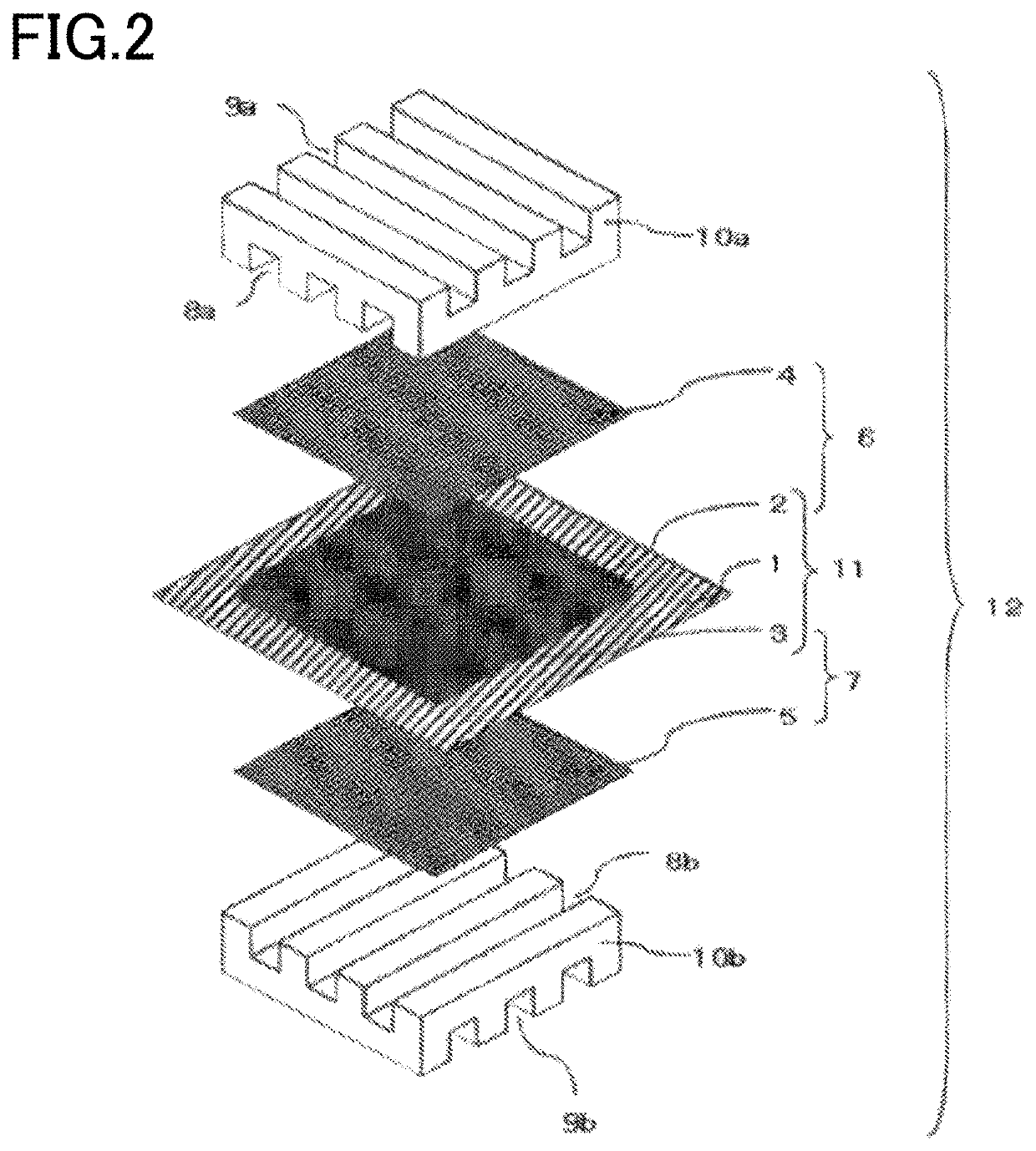Fuel cell membrane electrode assembly and polymer electrolyte fuel cell
- Summary
- Abstract
- Description
- Claims
- Application Information
AI Technical Summary
Benefits of technology
Problems solved by technology
Method used
Image
Examples
example 1-1
[0095][Preparation of Catalyst Ink]
[0096]A platinum-carrying carbon catalyst (catalyst support particles) with a loading density of 50 mass %, a fibrous oxide-based catalytic material (TiONP) having an average fiber diameter of 100 nm and an average fiber length of 15 μm, and a 25 mass % polymer electrolyte solution were mixed in a solvent and dispersed in the solvent using a planetary ball mill. The dispersion time was set to 30 minutes to prepare a catalyst ink. The composition ratio of the starting material in the prepared catalyst ink was set as follows. That is, the mass ratio between the carbon carrier, the oxide-based catalytic material, and the polymer electrolyte was set to 1:1.5:0.7. The solvent in the catalyst ink contained a mixture of ultrapure water and 1-propanol. The volume ratio between ultrapure water and 1-propanol in the solvent was set to 1:1. Further, the catalyst ink was prepared so that the solid content therein was 12 mass %.
[0097][Substrate]
[0098]As a subst...
examples
[0168]A description will be given of a method of producing the first electrocatalyst layer and the membrane electrode assembly for use in the polymer electrolyte fuel cell according to the present embodiment, through specific examples and comparative examples. The present embodiment should not be limited by the following examples and comparative examples.
[0169]In the following examples and comparative examples, the two electrocatalyst layers are both first electrocatalyst layers. As described above, only one of the two electrocatalyst layers may be the first electrocatalyst layer.
example 2-1
[0170][Preparation of Catalyst Ink]
[0171]A platinum-carrying carbon catalyst (catalyst support particles) with a loading density of 50 mass %, an oxide-based catalytic material (TiONP), carbon fibers having an average fiber diameter of 150 nm and an average fiber length of 6 μm, and a 25 mass % polymer electrolyte solution were mixed in a solvent and dispersed in the solvent using a planetary ball mill. The dispersion time was set to 30 minutes to prepare a catalyst ink. The composition ratio of the starting material in the prepared catalyst ink was set as follows. That is, the mass ratio between the carbon carrier, the oxide-based catalytic material, the carbon fibers, and the polymer electrolyte was set to 1:1.4:0.2:0.8. The solvent in the catalyst ink contained a mixture of ultrapure water and 1-propanol. The volume ratio between ultrapure water and 1-propanol in the solvent was set to 1:1. Further, the catalyst ink was prepared so that the solid content therein was 12 mass %.
[01...
PUM
 Login to View More
Login to View More Abstract
Description
Claims
Application Information
 Login to View More
Login to View More - R&D
- Intellectual Property
- Life Sciences
- Materials
- Tech Scout
- Unparalleled Data Quality
- Higher Quality Content
- 60% Fewer Hallucinations
Browse by: Latest US Patents, China's latest patents, Technical Efficacy Thesaurus, Application Domain, Technology Topic, Popular Technical Reports.
© 2025 PatSnap. All rights reserved.Legal|Privacy policy|Modern Slavery Act Transparency Statement|Sitemap|About US| Contact US: help@patsnap.com


